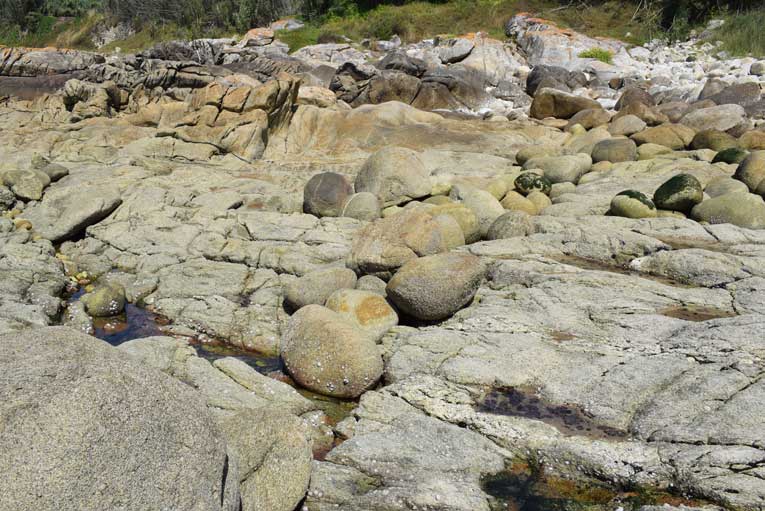The last week, we published in the journal Geomorphology a paper about the dynamic of a Galician boulder beach using RFID sensors. This work is entitled “Tracking clast mobility using RFID sensors on a boulder beach in Galicia, NW Spain” and is part of my dissertation project that analyzing the evolution of Galician coast.
This project supposes one of the firsts research using this type of sensors in coastal environments with boulder accumulations. Recent studies carried out in United Kingdom employed this technology for analyze the variations in a shore platform. In our case, we try to know as the boulder beach characteristics can affect in their behavior.
The boulders size and the wave height have not a clear role in the rocks displacement
Since 2016, we monitored the movement of 80 sensors in this boulder beach in Oia (Pontevedra, NW Iberian Peninsula). In this period, we did 6 visits to the study zone for establishing the boulder position in each moment. From this data, we reconstructed the possible way of these rocks and we interpreted the importance of the different environmental factors in these displacements.
This project allowed to draw some important conclusions, for example:

- RFID sensors joint to high resolution images provide an inexpensive way to know the variations of our coast.
- The movement of boulders was irregular and essentially chaotic, and it is not related to their size, shape, or the marine storms.
- Boulder transport is the result of a complex variety of factors with different importance and effects.
- The boulder beach fluctuates about a state of sub-equilibrium.
If you want to read the complete study, you can read free, until January 10, 2021 here.
